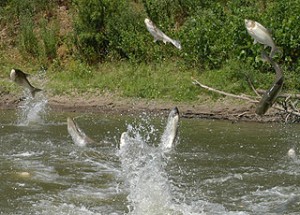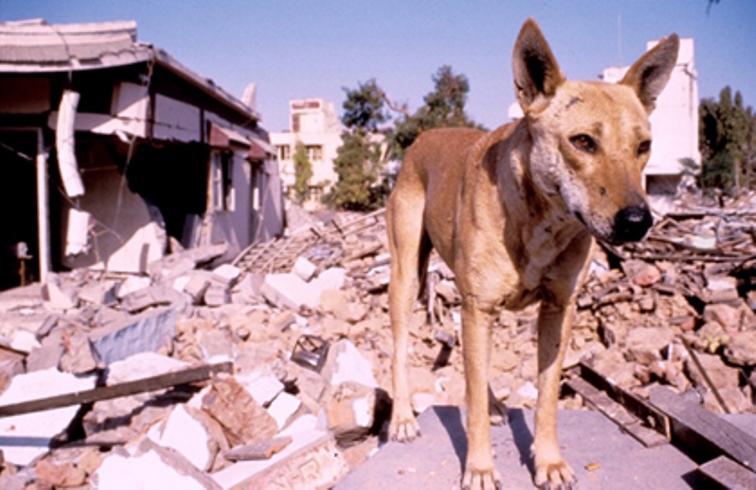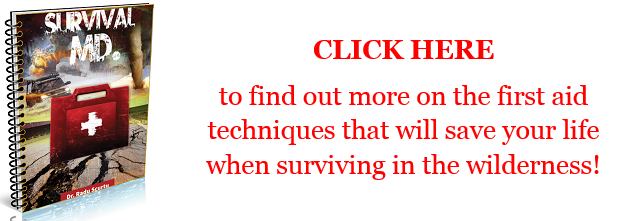When it comes to natural disasters, animals are way further ahead of the curve than people are, and just seem to be able to sense change in the air.
If you know what to look for, you can take advantage of the warning signs exhibited by your four-legged forecasters and winged weathermen, and prepare faster for survival.
Before casting this particular article aside, consider the fact that when the tsunami hit Thailand in 2004, nearly all of the animals who were free to roam made it to higher ground and survived. More than 200,000 humans died. That’s either one tremendous coincidence or the animals knew something that we didn’t.
Nowhere in the following paragraphs are we going to mention any kind of puppy ESP because that’s not what this is about. What we WILL discuss is the potential science behind how animals know when a SHTF situation is about to occur. We’re also going to touch on 12 warning signs from animals for SHTF.
First, let’s discuss HOW they know that weather is changing.

Infrasonics are extremely low-pitched vibrations and are emitted by such natural disasters as earthquakes and tidal waves. Infrasonic vibration causes nausea and nervousness in people.
Animals such as cows, horses, and elephants can hear lower levels than we can so maybe they interpret these vibrations as signs of danger and head for safety. They may also be able to feel them with their feet.
If you notice your animals fretting, or happen to live where you can see elephants migrating, take heed.
Barometric (air) and hydrostatic (water) pressure changes are more noticeable to animals than they are to most humans.
When hydrostatic pressure drops, such as it does before hurricanes and other storms, sharks head to deeper water where it’s safe. Bees and other land-dwelling animals react similarly when barometric pressure drops.
All of their senses are just better. When it comes right down to it, people just can’t feel, hear, see, smell or taste nearly as well as many other species.
When it comes to using our senses to detect the weather, we may be able to sense drops in pressure or temperature but we simply can’t hold a candle to an elephant’s sense of feel or a dog’s sense of smell or ability to hear.

As promised, we’re going to toss in a list of animal behaviors that you should watch out for.
If you see these changes, especially if you see more than one of these animals acting like this, take heed because something heavy is on the way.
- Bees stop flying around and go to hive.
- Birds go to their trees and aren’t flying around. They may migrate completely away.
- Fish bite hard one day then completely disappear the next day, or even a few hours later.
- Cows and other animals head to high ground and safety.
- Dogs and cats go missing. One guy checks lost animal posts in his local newspaper and actually uses that as one of his prediction tools for earthquakes.
- Fish jumping an unusual amount, or fish that don’t typically jump, particularly catfish, are jumping. There is some speculation that they can sense changes in the electrical impulses in the air or water caused by impending disasters such as earthquakes.
- If you live in an area that has a lot of frogs, they are prone to disappear prior to earthquakes and other natural disasters.
- Chickens may become agitated and stop laying eggs a few days before a major storm.
- Dogs become more agitated and may bark more or even become aggressive a few days before a major SHTF weather event. They may even refuse to go on a walk or walk to a certain area, such as by the water, during their walks.
- Horses, dogs, monkeys, and other pets may refuse food or treats several hours prior to a natural SHTF occurrence.
- Bats may be awake and active in the middle of the day a few minutes or even hours prior to a natural disaster occurring.
- Just for fun, we want to throw in an 12th sign – HUMAN babies tend to become anxious and irritable when extreme changes in weather are coming.
It’s this last observation that makes you really stop and think. There’s no doubt that animals excel at using their senses to survive but perhaps people have better radar than we think. Maybe we just need to focus on it more and hone it, just like we do any other skill.
Using animals to predict weather isn’t just backwoods mumbo-jumbo. Millions of dollars per year are being invested in finding out how effective animals are at predicting weather. Scientists know that there’s something more to it that just random luck and they’re working diligently to prove it. They would even like to use it to anticipate when and where natural disasters are going to occur.
Don’t make the mistake of writing off your animals’ weird behavior shifts: they may be the best predictor of SHTF that you could ever ask for!
This article has been written by Theresa Crouse for Survivopedia.


































![[VIDEO] Pocket Survival Kit (PSK) – Rescue Signal Options](https://nt.survivopedia.com/wp-content/uploads/2023/10/CachePSK10.jpg)








































Hey google was is mine dated the 31st, and it is the 30th. Boy are you shook up that bad. lol
Lol My pet monkey is going crazy and the elephant I ride home refuses too eat and bit me hard.
Snakes come out before an earthquake.
One time when I had two dogs and one bird, all three of them were very agitated. A friend of mine who was visiting noticed it, too. I got on the computer and checked the quake maps. There had been a 7+ in Japan some time earlier. I don’t rely in this because the dog I have now didn’t have that kind of reaction when the 9.0 hit Japan in 2011. If he did, I didn’t notice it.
I am a farm woman and I remember watching the cows,horses, and chickens go to the barns that they belonged in. It was amazing to watch them and then watch for the bad weather to move in. I can remember as a child going to a place my dad always took us to for safety and it was usually a tornado that came over us. The animals are a lot smarter that a lot of people I know. Like goggle
Dont panic, think positive , got caught in a bad riptide. had to let out a little air & followed air bubbles up. Ready a family plan to prepare for worst & pray for best. Happy New Year
When ants build a higher den, more than normal, I heard were
going to have bad winter.
Before Hurricane Andrew, here in SWFL we saw many snakes climbing trees and the sides of barns. It was the day before, but that is when we knew it was going to be very bad.
When there is very low barometric air pressure, like before a tornado, birds will stay close to the ground, or even end up on your porch, fly down the chimney, and/or end up in your house. I have seen this a couple of times. The second one was before a small tornado came through my yard, and took down a tree. Insects also always get agitated before a rainstorm, although that is not a SHTF situation.
This reminds me of Red China bragging about their technology. They researched all those animal phenomena and set up tracking stations for these animals all over the country. They were going to show the world they were advanced. But the next big earthquake had no foreshocks. The granite just suddenly shattered. The Chinese had no warning from the animals. No guarantee except from God the Holy Spirit.
I knew of an Appaloosa stallion that was going bonkers for a few days before the earthquake that hit the Seattle area in late Feb 2001. It was so bad they called a vet in to find out what was wrong with him (nothing). {His instincts were telling him to move the mares to higher ground} He returned back to his sweet, easy going self after the quake/tremors had passed.
…~*~…
Today people are so much concerned about surviving in the disaster. But really people need perfect for doing this. . People should be well-known about surviving in any disaster
On two occasions I have found a bird in the house prior to severe weather, one instance of which included a small tornado ripping a maple tree in half in my front yard. Birds will stay low if the barometric pressure has dropped very low, which indicates severe weather. One bird flew down the chimney and was inside the woodstove, and the day of the tornado incident, the other had hopped under a gap in the door and was on the enclosed porch floor. I consider this to be a strong indicator of severe weather.
Birds will also signal to other birds with a specific chirp that water is available. If you live in a dry area, you will notice that they will show up about the time the lawn sprinkler or drip irrigation comes on, and one will signal to the others that the water is there. In my area, it is often a female purple finch that does the announcing, as they often nest under the eaves of buildings.
Also, “mamatus” clouds, that hang down like an egg crate shape, i.e. very lumpy and dark, are also a strong indication of tornado weather. They are spooky looking and unusual to see, and not easily missed if you are paying attention. The clouds will get a very heavy dark greenish/gray color when a tornado is imminent, almost like being under water. Rain drops traveling sideways in high wind are also evidence that a tornado is very close – remember – they are not always the large ones that make the news. Sometimes they only last a few seconds and then disappear, but they can still take your roof off! Where flat land runs up into hills and gullies, the wind can boil up out of the ravine and spin briefly before dissipating. Also, scientific studies have suggested that the bi-directional traffic patterns on freeways may actually enhance the formation of tornados!
Some very good observations and information there. Thank you. I have observed the same on the cloud formations concerning tornadoes on my visits to Nebraska myself.